Tomato Pervoklashka: description, agricultural technology and reviews of the variety
Tomato First-grader belongs to the early varieties. He is liked by gardeners for the taste of the fruit and yield.
Content:
- The main characteristics of the variety
- Breeding features
- Growing recommendations
- Diseases and pests of tomato
- Benefits and reviews of the variety
The main characteristics of the variety
Like most early tomatoes, the First Grader is short. It refers to determinant varietiesthat grow in to a certain height and then stop growing.
Tomato variety characteristic:
- The height of his bush does not exceed 1 meter.
- There are few leaves, they are painted in a dark color. The first inflorescence is formed over 6-7 leaves.
- Each of the bushes grows up to 6 kg of pink fruits. Their shape is round-flat, slightly ribbed.
- The weight of one tomato reaches 200 g. They are multi-chambered, have a thin skin, sweet pulp, and a large amount of juice.
- Fruits ripen 90-108 days after germination.
Reviews of gardeners about the variety are only positive, they argue that the First-grader tomato not only has a high yield, but is also easy to grow. The advantage of the variety is the ability to grow well in greenhouses and in the garden. Therefore, it can be grown in different regions.
Growing in a greenhouse gives you the opportunity to harvest earlier. In the north, this is often the only way to feast on pets. tomatoes.
Breeding features
First-graders are propagated by seeds sown in early March. The timing may vary depending on the expected time of planting the bushes in the soil. From the moment of sowing to planting in the ground, it should take about 70 days.
How to grow tomato seedlings:
- The seeds are moistened, for disinfection they are kept in a weak potassium permanganate solution few hours. Then wrap with a damp cotton cloth and set in a warm place for germination. After two days, they can be sown in pre-prepared soil.
- The seeds in granules have already been processed. The shell contains a supply of trace elements. They are sown directly into the ground without soaking.
- The soil is bought in the store or prepared at home in the fall. It consists of black soil and manure. Calcined in the microwave for 20 minutes.
- Fill the molds with soil, placing a drainage layer on the bottom. Grooves are made with a depth of 2 cm, the seeds are laid out at a distance of 1 cm from each other, and sprinkled with soil. Water with a spray bottle. Cover with foil or glass, set in a warm place. Temperature for germination needs to be maintained within 25 degrees.
- After the shoots appear, remove the shelter, set the dishes with seedlings in a bright cool (18-20 ° C) place. If the temperature is not lowered, the seedlings will stretch out.
Water as the soil dries up. Do not fill in. This can lead to black leg disease. It can severely thin out crops or even destroy all seedlings. In the event of its appearance (seedlings wither and fall to the ground), they stop watering, loosen the soil in the aisles. When the seedlings have true leaves, they can be fed with calcium nitrate. The procedure is repeated after 2 weeks. Discontinued after the formation of the first hand.Treatment will protect plants from top rot, make it strong.
Yellowing of the leaves indicates that the tomatoes are deficient in potassium.
Wood ash is used by infusing it in water for a day. The solution is drained and the seedlings are watered, dissolving in a ratio of 1:10. Seedlings with a few true leaves dive in separate cups, cut bottles or other utensils. Plants planted in peat tablets or cups, do not dive. Although this procedure is useful for tomatoes. When transplanting, the tip of the root breaks off, then it begins to bush. As a result, the root system is strengthened, which contributes to active growth and the formation of a large number of fruits.
Seedlings are hardened by exposing them to the air. First, leave for a few minutes, gradually increase the time. Tomatoes should be outdoors even at night before planting. This is especially true for seedlings for planting in the garden.
Growing recommendations
Before planting, the seedlings should have a thick purple stem. Light green seedlings indicate that they have not been hardened.
Recommendations for planting seedlings in the ground:
- Dig holes. They may not be deep, but long, so that the seedlings can be laid at an angle. This method of growing makes it possible to quickly adapt to new conditions. The top of the seedling lies on the ground until the root system takes root and the stem begins to grow. The longer the buried part of the stem, the more roots will subsequently form on it.
- A handful of rotted horse or cow dung is placed at the bottom of the hole. Ash and superphosphate are added, which will contribute to the formation of a large number of fruits and their ripening.
- The distance between the holes is left 50-70 cm. 1.5 L of water is poured into the hole. They wait for it to be absorbed. The root of the plant is laid in moist ground, covered with the same earth. Cover with dry soil from above. This will prevent cracking of the soil.
You can not plant seedlings in the mud. As the temperature rises, it will shrink into a lump, which will squeeze the root system and prevent it from developing. Gardeners are advised to form a bush in 3 stems. They regularly stepchild him, remove the leaves under the ovaries. So that all the fruits are evenly illuminated by the sun, they do not touch the ground, they are tied to supports. This is especially important when growing in a greenhouse.
Harvesting for daily consumption can be carried out as the fruit ripens. But due to the fact that they ripen together, a large number of them may turn out to be overripe. To prevent this from happening, gardeners are advised to pick brown tomatoes. This will help to stretch the terms of the use of tomatoes First-grader. Plucked brown fruits are placed in boxes and taken out into a cool room: basement or cellar. Fruits that have been damaged during ripening, harvesting or storage are processed into tomato juice.
Diseases and pests of tomato
The main pests of tomatoes are the Colorado potato beetle, aphid, mite, slugs. In order to scare off some of them, gardeners are advised to plant spicy plants between the bushes, calendula, parsley, marigold... Slugs are collected by hand and taken out of the territory of the site. To reduce their number or completely get rid of the pest, regular loosening of the soil between the bushes will help.
To protect against the Colorado potato beetle, which can completely destroy the bush, is best done by soaking the seedlings in Aktar. One package is diluted in two liters of water, the seedlings are kept in the solution for 2 hours. After this treatment, Colorado beetles and other insects will not be dangerous to the bushes until the end of September.
According to gardeners, most often the Pervoklashka tomato is affected by a fungal disease - late blight.
It manifests itself in the form of brown spots, which gradually grow, merging into large foci. Tomatoes turn black and become unusable. Protection against diseases is carried out in a comprehensive manner.This is a seed treatment before planting, spraying of adult plants fungicides and regular thinning of bushes: removal of stepchildren and lower leaves and leaves under the formed ovary, tying bushes to supports. The affected plant parts and fruits are immediately removed. They are taken out of the territory of the site or greenhouse.
The bushes are treated with fungicides every 2 or 3 weeks, depending on the amount of precipitation at this time. Some gardeners spray tomatoes with copper chloride after every rain. In order for the fruits to be suitable for consumption, processing is stopped 3 weeks before ripening. Weeds are carefully removed so that air passes freely between plants, ovary stems and fruits. Stagnant air at high humidity and heat leads to the rapid development of fungal diseases.
When grown in a greenhouse, it must be regularly ventilated. Watering infrequently and with a small amount of water. In the fall, plant residues are removed, the supports and the shelter are washed using disinfectants. The soil in stationary greenhouses is replaced every 4 years. In the garden, you cannot plant tomatoes in one place for several years. Their predecessor should not be nightshades. Attracts pests with lush lush greens, which are formed due to the introduction of a large amount organic fertilizers... Therefore, you should not overfeed them with organic matter.
Benefits and reviews of the variety
The fruits of the first-grader tomato are very useful for the human body. User reviews claim that they can be given to children. Pink tomatoes are not as common as red ones. In addition, they are sweet and fragrant, so children do not have to beg for a long time to eat a tomato. Prepare for the winter, pickling in pieces.
The pulp contains a large amount of natural antioxidants that protect the human body from neoplasms, cleanse from toxins. They contribute to weight loss because their use satisfies hunger. Lycopene, which makes tomato pulp red, prevents atherosclerosis. Tomatoes need to be eaten regularly to obtain an antioxidant effect.
Exposure to ultraviolet radiation promotes the removal of bacteria from the body, it tolerates sunburn more easily. Tomato juice removes harmful substances that accumulate in the smoker's body. Therefore, it is advised to drink to people who have recently quit smoking.
The advantages of the variety:
- Ripens early.
- Many fruits are harvested from the bush.
- They ripen in one period.
- The fruits are almost the same size.
- High transportability.
The First-grader tomato has its drawbacks:
- The variety is easily affected by fungal diseases.
- The bush needs to be forced regularly.
- A high yield can only be obtained by using mineral fertilizers.
More information can be found in the video:



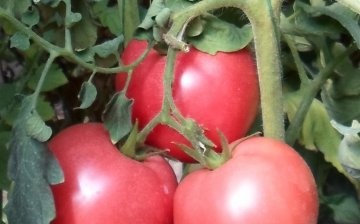
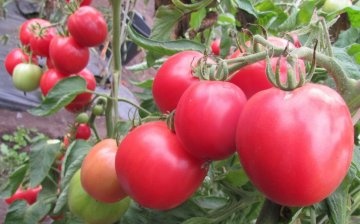
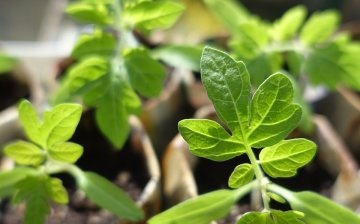
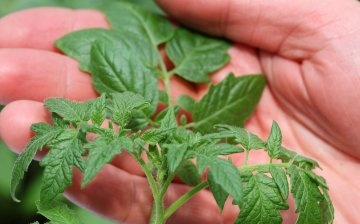
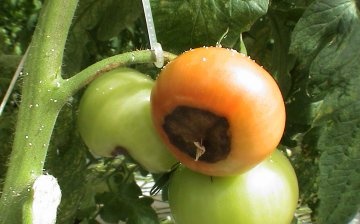
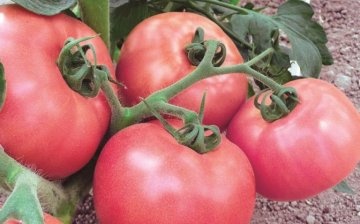







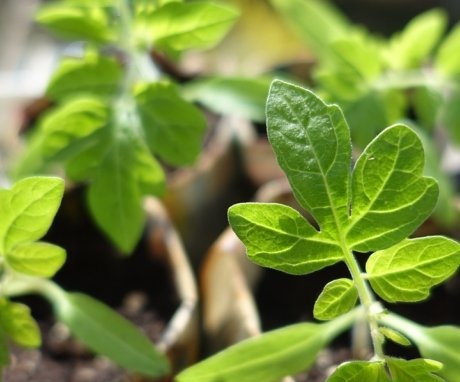

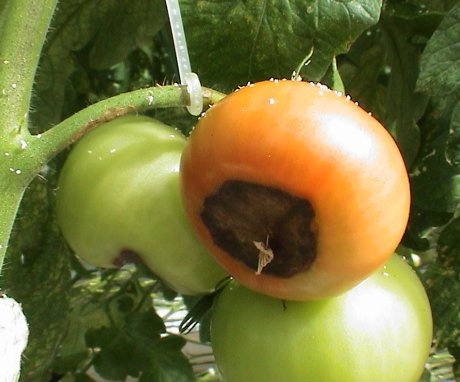
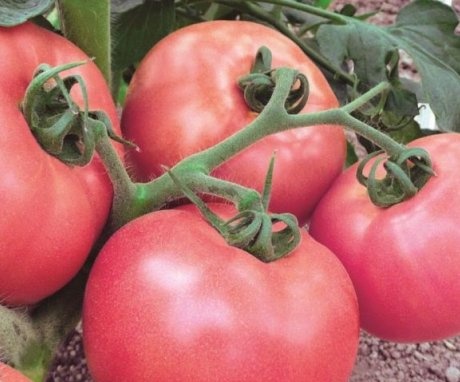
I like this early ripening variety, and I also like pink tomatoes. The harvest is good, but I have always grown a First-grader in two stems, but in the article, it is recommended to leave two stepsons. Next year I will try to grow three stems.